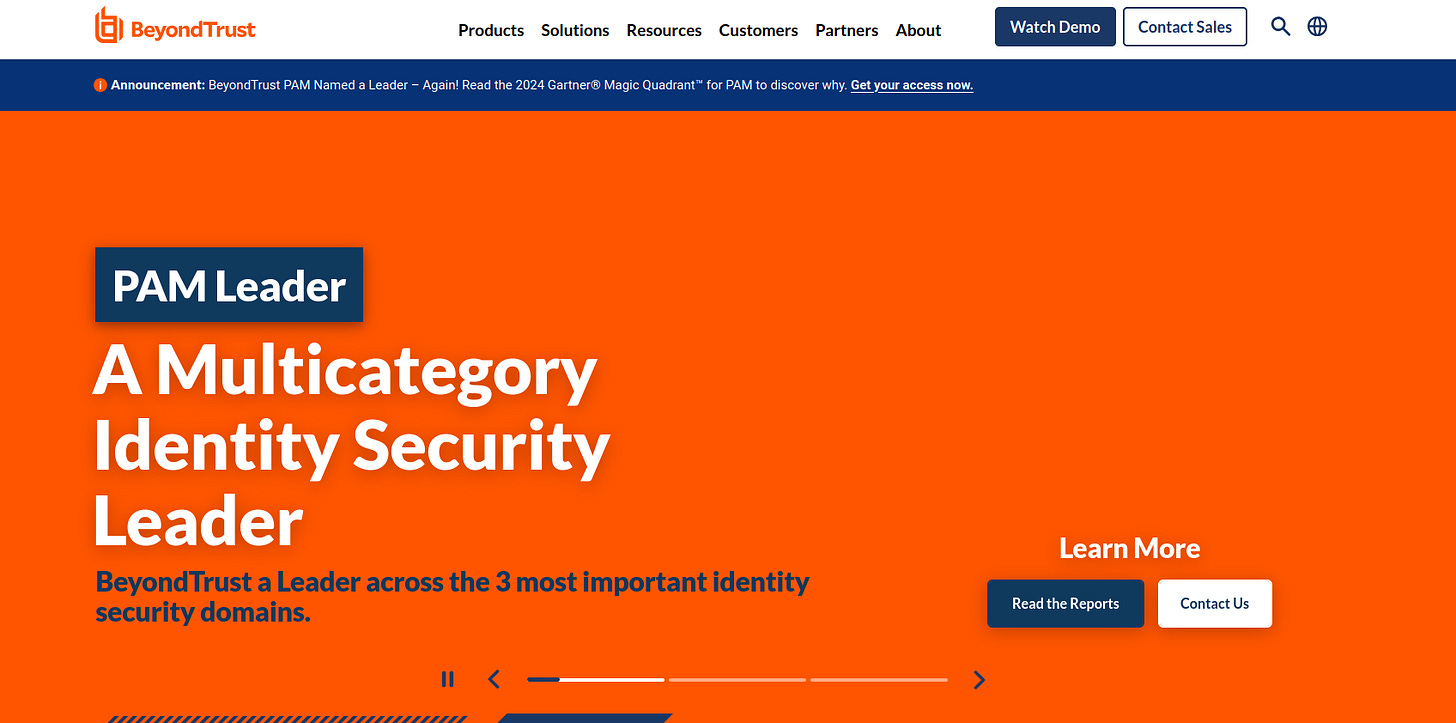
In early December 2024, the U.S. Treasury Department was targeted in a sophisticated cybersecurity attack, exposing vulnerabilities in critical government systems. The breach, attributed to Chinese state-sponsored hackers, exploited a key vulnerability in BeyondTrust, a widely used remote support software, allowing the attackers to access sensitive workstations and unclassified documents.
As an aside, I have to marvel at the irony of “BeyondTrust” was the company that the Chinese used to breach a US government entity.
Details of the Breach
The attack was first identified on December 2, 2024, when BeyondTrust detected suspicious activity. By December 5, the company confirmed that an authentication key used to secure its cloud-based services had been stolen. This key allowed the hackers to bypass security measures, providing them with administrative access to workstations within the Treasury Department.
According to CNN, the Treasury Department revealed that the stolen key enabled attackers to "bypass authentication and gain administrative access to some Treasury workstations, viewing unclassified documents stored on those systems."
The Treasury classified the attack as a "major cybersecurity incident" and promptly involved federal agencies such as the FBI and the Cybersecurity and Infrastructure Security Agency (CISA) to contain the breach and assess the damage. As reported by Wired, "BeyondTrust’s service was immediately taken offline to prevent further exploitation, and investigators have since found no evidence of continued unauthorized access."
According to the BBC,
“Officials said initial investigations suggested the hack appeared to have been carried out by "a China-based Advanced Persistent Threat (APT) actor". The spokesperson said the hacker was able to remotely access several Treasury user workstations and some unclassified documents that were kept by those users.
The department did not specify the nature of these files, or when and for how long the hack took place. They also did not specify the level of confidentiality of the computer systems or the seniority of the staff whose materials were accessed.
The hackers may have been able to create accounts or change passwords in the three days that they were being watched by BeyondTrust.”
Denials from Beijing
Image from the Financial Times
China’s government has consistently denied involvement in such cyber activities, characterizing the accusations as politically motivated.
Chinese embassy spokesman Liu Pengyu denied the department's report, stating that,
"We hope that relevant parties will adopt a professional and responsible attitude when characterizing cyber incidents, basing their conclusions on sufficient evidence rather than unfounded speculation and accusations," he said.
"The United States should stop smearing China with baseless accusations and focus on building trust and cooperation in cybersecurity."
“According to the report, the United States has been hyping a hacker organization named "Volt Typhoon" since 2023 and engaging in a worldwide disinformation campaign against China.
Lin said that back in April, relevant Chinese agencies revealed the scandal about the United States framing China for being responsible for "Volt Typhoon" in order to advance its own geopolitical agenda.”
While diplomatic tensions over cyber espionage persist, analysts argue that attribution remains a complex challenge. As reported by the New York Post, cybersecurity experts emphasize that “state-sponsored hackers often use tactics to obscure their origins, complicating efforts to hold them accountable.”
Risks of Third-Party Software
This incident underscores the inherent risks associated with third-party software in critical systems. BeyondTrust, a provider of identity and access management solutions, plays a vital role in enabling remote support for large organizations. However, its compromise revealed vulnerabilities in how such tools are deployed and managed.
“Remote access tools have become indispensable for modern IT environments,” an expert told BBC. “But their security needs to be airtight. When even a single authentication key can grant administrative access, the stakes are incredibly high.”
The Treasury’s response to the breach involved taking immediate measures to secure affected systems, but the incident has drawn attention to the broader need for stronger safeguards and more rigorous oversight of third-party software providers.
Conclusion
The Treasury breach serves as a reminder of the ongoing cyber threats posed by state-sponsored actors. The attack demonstrates the sophistication and persistence of such groups, who exploit even minor vulnerabilities to infiltrate critical systems. While the breach’s immediate consequences appear limited, the broader implications for national security are significant.





Do we have any ideas yet how they got their hands on that key?